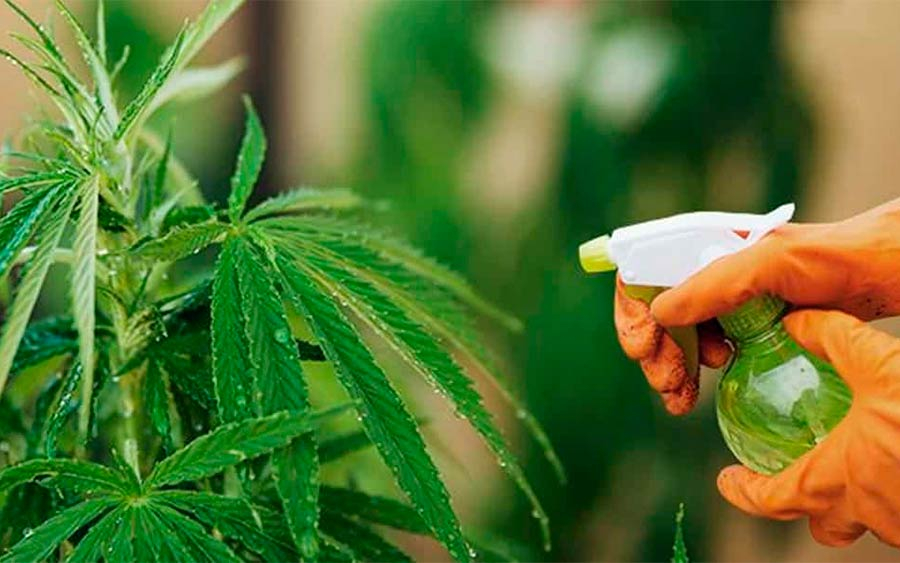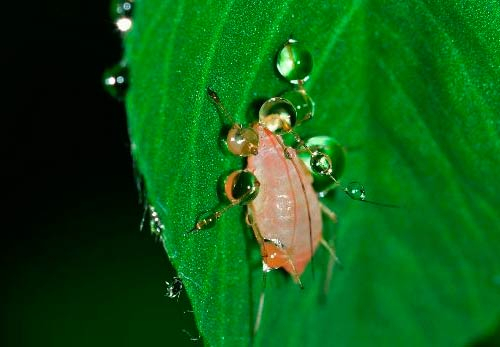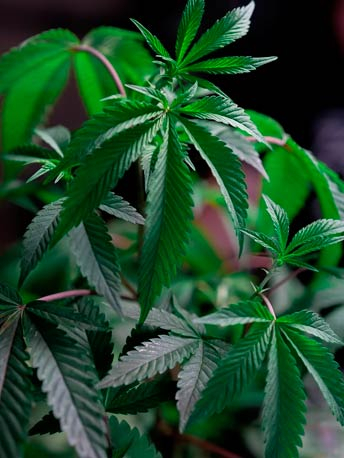
Yes, you can spray insecticide during the flowering stage. If outdoor growing is your thing, you will have already discovered that you must also use pesticides on your marijuana plants to keep them away from pest attacks. But beware, making a mistake in the use of insecticide can be just as serious a threat as any fungus or pest.
Natural insecticide marijuana plants
Reading the title we clear the first unknown: during the flowering phase we have to use a natural insecticide for our plants. In other words, we forget about chemical products.
Firstly because the decomposition period of these pesticides is very long and secondly, simply because using this type of product on a bud that you are going to smoke is not a great idea.
Also, think of it this way: these insecticides are scrupulously tested for certain uses, for example, food. But can you imagine a study showing when these products stop having an effect on marijuana plants? That's right, you've got it right: there isn't one.
Okay, it is clear that we have to focus on organic pesticides. But this group is still tremendously broad, let's break it down.
Types of organic pesticides
Next, we are going to check that, within organic insecticides, we can choose different types. But before we talk about them, we have to differentiate two basic groups: systemic insecticides and contact insecticides. As their name suggests, systemic insecticides carry out their function from inside the plant, from its central system outwards.
Contact insecticides, on the other hand, work the other way around. They stay on the outside of the plant, where we have to apply them in order for the bugs to encounter their worst enemy.
How do we translate all this? Quite simply, the systemic will completely impregnate the plant as a whole, which means that it will be stronger and will take longer to disappear from our plantation. Is the threat to your crop more specific or do you simply want to keep the insects away for what might happen? Then let's go for the contact insecticide.
Now that we're getting down to action, you're going to identify them. However, we are going to see how the main cause that will lead us to use a particular type of insecticide is related to the characteristics of the insect or external agent that is threatening our crop.
Let's do a 3 for 1: Each pest is different, each threat needs a specific solution, and each "antidote" has a particular recipe. So let's go with everything at once.
Homemade insecticides for marijuana: what to use and how to make them

Neem Oil - Effective against whiteflies, mulch flies, aphids, etc.
Let's start with the insecticide that must be controlled. It is the multipurpose one, the one that is effective both for already developed pests and for prevention. It is also true that from Delicious Seeds we recommend its use against pests that are not particularly strong.
Preparation: use 5 milliliters of neem oil per liter of water. As simple as this. Oh, and don't forget to apply it with a spray container.
Garlic - Effective against pests, especially thrips and red spider mites
The natural antidote par excellence. The good thing about this method, apart from its accessibility and ease of use? Well, it will only attack pests that are really negative for our plants. For example, ladybugs are not affected!
Preparation: In addition to two cloves of garlic, you need organic soap (liquid if possible), oil (olive) and water. You have to crush the garlic, mix it with the water and filter it with a cheesecloth before adding the rest of the elements. Again you need a sprayer for this insecticide designed for cannabis.
Horsetail - Effective against all types of fungus
A biological fungicide that you have probably already heard of. What you probably did not know is that you have it at your disposal in any herbalist store and even in some supermarkets. This insecticide for flowering plants does not need much more presentation, so let's get straight to the important part:
Preparation: To every 100 grams of horsetail you have to add a liter of water. And in this case you have to heat the mixture before straining it and applying it through spraying (exactly as in the cases explained above).
Avocado pit - Effective against whitefly infestation
In case you are only concerned about whitefly, this is the alternative that will give you less headaches. Just grate the avocado pit and mix it with a liter of boiled water. Try to apply this mixture at least one day after you have prepared it. But to apply it, you have to add even more water to this mixture (specifically half a liter per 100 milliliters of mixture.
Sodium bicarbonate - Effective against spiders, mosquitoes, ants...
We continue simplifying the task, if it is the "classic insects" that you think can put your crop at risk, we don't have to complicate our life more than necessary. A teaspoon of baking soda for every two liters of water and you're good to go. Add another tablespoon of vegetable oil and a mini teaspoon of soap.
Essential Oils - Effective against aphids, whiteflies and spider mites
Rosemary, peppermint, eucalyptus... these oils are loaded with terpenes, molecules that plants generate to protect themselves from insects. How about mixing the three? A small spoonful of each, a liter of hot water and another mini spoonful of soap. And now... Spray our plants with this natural acaricide.
Right, we have focused on homemade insecticides for marijuana, but you also have at your fingertips other natural products that you can buy directly for use. Although they are organic, these indicate a safety period, an estimated time for all the components they contain to disappear from our crops. Yes, these are the systemic pesticides and insecticides that we talked about at the beginning of the post.
Well, to this period we have to add about 10 extra days. As we said at the beginning, there are no official studies that show how long it takes for these components to disappear if we refer to the cannabis sector, so better safe than sorry... And we're not just talking about pests!
"But I grow indoors, I don't need all these things". I hope this thought hasn't crossed your mind, but just in case, let's talk about it....
Heat is the best friend of any pest whether we are talking about fungi or especially if we are talking about insects. If there is a pest around the specific place where we are growing, you can take it for granted that it is going to make its way. In addition, many times the origin of these invaders is in the plant itself that has previously been grown in any other environment. Yes, you have to use insecticides indoors.

Alternating insecticides, the best option
We come to the end with a tip that any experienced grower will give you, and that is: alternating insecticides against the same pest or fungus will always be positive, and this has an explanation.
It is very likely that, if you use a single product, either for preventive purposes or in the face of a threat that is already attacking your plants, these organisms will internalize the component, adapting to it and become immune. This explains why alternating the use of these products is the best option.




